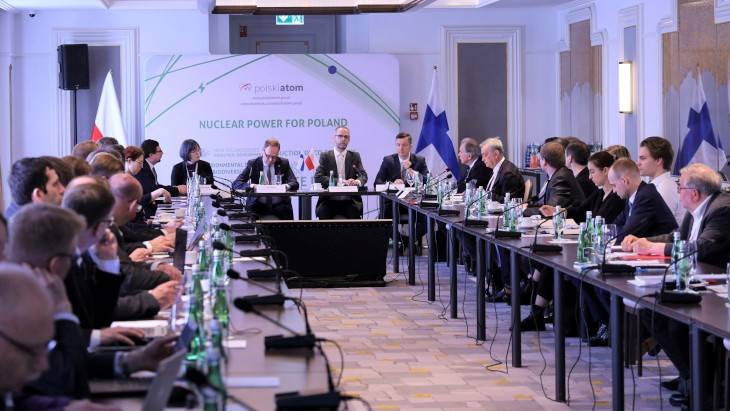Opening the event, Poland's Deputy Minister for Climate and Environment, Adam Guibourgé-Czetwretński, reiterated his country's goal to bring in nuclear power and establish a generating capacity of 6-9 GWe by 2043.
The purpose of Poland's nuclear programme is "to reduce the national emission of greenhouse gases and air pollutants from the energy sector, as well as ensure stability of supplies and energy security". However, the country is also keen to bank economic benefits from its nascent nuclear sector, said Nowacki, "through the large involvement of Polish enterprises in the very process of building nuclear power plants, as well as through, for example, technology transfer to domestic companies and research centres and the possibility of carrying out works on export markets."
In the process of reducing reliance on coal, Nowacki said, "We can build both a sector working for renewable energy and for nuclear energy".
"Few people know that 80 Polish companies have been involved in 40 nuclear projects in 24 countries on three continents in the last ten years, including in Canada, India and Japan," he noted.
Some 25 Polish companies worked on TVO's recently completed Olkiluoto 3 in Finland and "this bodes well for further Polish-Finnish cooperation on nuclear projects, and perhaps also joining forces in other European or global projects," said Nowacki.
Poland's national plans for nuclear focus on the construction of large reactors, with the first to be on the country's Baltic coast. An environmental impact assessment was submitted last month regarding potential siting at either Lubiatowo-Kopalino in the Choczewo commune or Żarnowiec in the territory of the Krokowa and Gniewino communes.
Separately, several Polish industrial majors are considering small nuclear power reactors as substitutes for coal they have been burning to provide heat and power to industrial processes.
The Polish-Finnish Nuclear Industry Forum was held in Warsaw from 20-21 April, organised by Poland's Ministry of Climate and Environment and Finland's Ministry of Economy and Employment. They were supported by the Finnuclear Association and the Polish Chamber of Commerce for Energy and Environmental Protection.






_18570.jpg)
_16159.jpg)
_49205.jpg)





